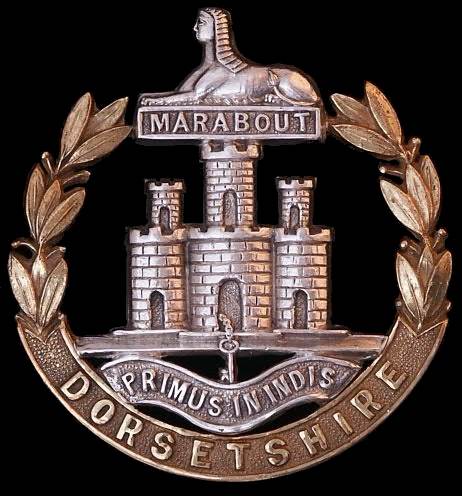
Harold Victor Carless

then
Dorsetshire Regiment
5th Battalion
Private 19107
 | Harold Victor Carless |  |
| probably North Somerset Yeomanry then Dorsetshire Regiment 5th Battalion Private 19107 | ||
| Died 11th January 1917 |
Harold Carless' Parents | ||
|
Harold Carless was the second of nine children born to Cornelius Carless and Hannah (nee Wiltshire). Cornelius Carless Harold’s father was a tailor, born in 1864 in Walsall to Sarah Ann Carless, who was unmarried at that time. At the age of 7, Cornelius was living with his grandfather Isaac
Carless. His grandmother was called Ellen and his uncles, with whom he also
lived, were Joseph, Israel & Samuel. From the names, we get the sense that this was
probably a Jewish family and it is possible that more records relating to the
Carless family could exist within any contemporary Walsall synagogue documents.
In this regard it is worth noting that the spelling of the family name in the
1861 census was ‘Careless’. Cornelius's mother Sarah Ann married Abram Pignutt in 1875 (Abram was just 12 years Cornelius’ senior), when Cornelius was 11, and they remained living in Walsall. Two little Pignutts (Ellen & Ann) arrived soon after. In 1881, aged 17, Cornelius was listed as a tailor’s apprentice and, in 1891, as a lodger living in Great Malvern under the name ‘Charles Carless’. Henrietta Wiltshire Harold’s mother was born 1871 in Batheaston, the fourth child of Francis and
Elizabeth Wiltshire. In addition to children with the surname Hannams,
from her
mother’s previous marriage, Henrietta's siblings included a further son
(her parents’ fifth child) who came after Henrietta. Henrietta's
father, Francis Wiltshire, died in 1875 when Henrietta
was just 4 years old, however a further son (Henry Thomas) is
attributable to
Elizabeth Wiltshire two years later. The lack of a father to provide income clearly hit the
family hard. The 1881 census shows Henrietta aged 10 and living in the Union
Workhouse at Odd Down (now part of St Martin’s Hospital on Midford Road) along
with her next elder sister, Louisa (12), and her next younger brother, George
(9). At the same time, her mother, Elizabeth Wiltshire, was working as a
charwoman and residing at Gloucester Road, Swainswick, with Henrietta’s eldest and youngest
brothers William (16) and Henry Thomas (3). Ten years later, in 1891, Henrietta’s fortunes had improved and she was living and working as a laundrymaid/servant at the Royal College, Lansdown (now the Royal High School) under the name ‘Harriet’ (Ernest West's mother was also working at the Royal College at the same time). Henrietta's mother, by
this time, had remarried and removed to Faringdon which was then in Berkshire (since 1974 in Oxfordshire). | ||
The Carless Family | ||
|
We do not know how Cornelius and Henrietta came to meet, nor
where. Given that Henrietta had no ‘family home’ in Batheaston, it is perhaps not surprising
that Cornelius and Henrietta married in Cornelius’ home town of Walsall. What
is interesting is that Cornelius was christened in 1890 at the age of 25 in the
tiny hamlet of Mavesyn Ridware in Staffordshire. Given his Jewish background, this may have been necessary
for a wedding to take place in a Church of England church. | ||
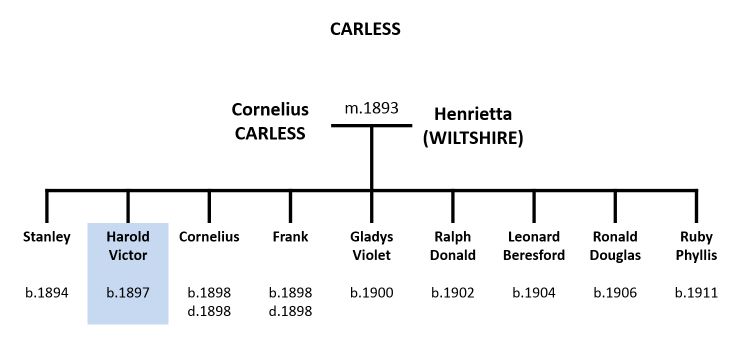 |
Move to BathThe first time we can pick up Cornelius & Henrietta Carless in the Bath Directories is in 1897, living at 24 Cynthia Road, but the birth in Bath of their eldest child, Stanley, in 1894, implies they were living in Bath very soon after the 1893 wedding. Directories were sometimes slow to catch up with changes and there is the possibility that they were previously in rented accommodation or a boarding house. |
|
24 Cynthia Road, where the Carless family resided in the early years of
the parents’ marriage and where Harold was born in 1897. |
|
Harold was born
in 1897 and then twins Cornelius (junior) and Frank were born and died in 1898, followed
by the birth of Gladys in 1900. In 1901, the family moved to 19 Sydenham Buildings (near Lower
Bristol Road) for a short spell before taking up residence in Crandale Road
(first number 26, then later 27), where the remainder of the children were
born. The 1901 census shows the father, Cornelius, working at home as a tailor. |
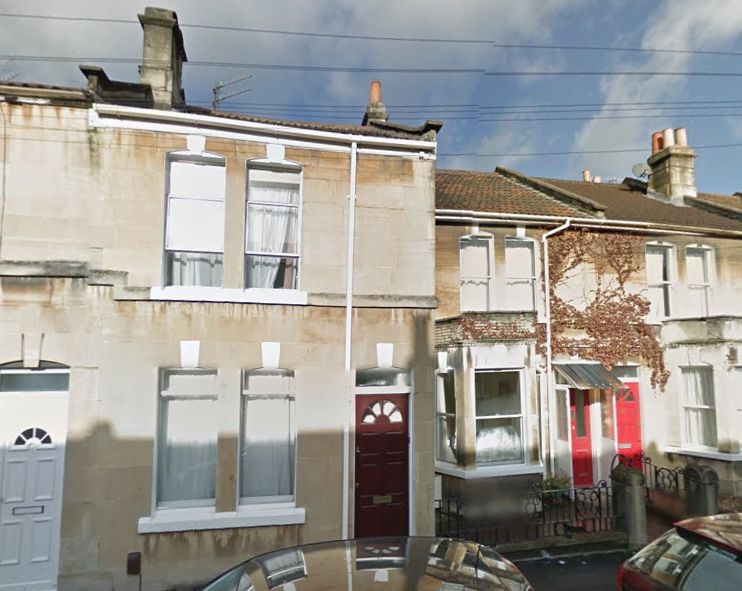 | ||
|
27 (left) and 26 Crandale Road, where the family lived during the
period when Harold was attending South Twerton School. |
|
In 1910, Harold was mentioned in the Bath Chronicle & Weekly Gazette report of South Twerton School’s end-of-year prize-giving for his attendance record. He was in Standard VII – the top class of the school in terms of age. Harold would have attended South Twerton School between the years of 1902-1910. The family’s 1911 census entry is interesting in one small detail. The records we see in relation to earlier censuses are those completed by enumerators, so that multiple households are all listed in one person’s handwriting. The 1911 census records had a form for each house and this was completed by the head of household. What is interesting is that Cornelius Carless not only lists his name as ‘Cornelious’ (with an additional ‘o’), but his signature is also (mis-)spelt the same way. For all the official records that relate to him, this is the only one with this spelling. Given his earlier listing as ‘Charles’ (census 1881), one might wonder whether he neither liked nor used the name Cornelius, preferring to be ‘Charlie’? Harold’s youngest sibling, a sister called Ruby, was born in 1911. We don’t know what Harold did upon leaving school. It is possible that he joined his father in the tailoring trade as an apprentice. The family moved to 6 The Triangle (now Triangle East, opposite the Baptist Church) in 1915. |
Harold Carless in WW1 | ||
North Somerset Yeomanry?
We would like to know more about Harold's early involvement in WW1. Judging by his later involvement with the Dorsetshire Regiment and the serial number he was given on joining the Dorsets, it is almost certain that he was drafted into the Dorsets from another unit and it is highly likely that this unit was the North Somerset Yeomanry. Harold's older brother Stanley was listed in the Bath Chronicle & Weekly Gazette as having joined the 4th Battalion of the Somerset Light Infantry in early October 1914. Dorsetshire Regiment, 5th Bn.
We know that Percy Ware transferred from the NSY to the Dorset Regiment and took the serial number 19222. From The Keep Military Museum (history website of the Dorsetshire Regiment): “Soldiers with numbers in the 19,000 block were reinforcements sent to
the 5th Battalion The Dorsetshire Regiment to replace casualties. Many of these
came from the 3rd Battalion The Somerset Light Infantry (special reservists) or
North Somerset Yeomanry.” Percy’s serial number was 19222 and Harold Carless' number was 19107. A search on the Internet yields the story of a George Fox, including the details: George enlisted into the 4th Reserve Battalion of North Somerset
Yeomanry at Bath, Somerset on 1st June 1915. He embarked for France from
Southampton on 22nd September 1916, landing at Rouen the next day. He was
transferred to the Dorset Regiment on 4th October 1916 with a new service
number of 19187. (http://www.chelmsfordwarmemorial.co.uk/Chelmsford_War_Memorial/FOX,_GEORGE.html) Hence we can be fairly sure that Harold and Percy both joined the 5th Dorsets around the same date and that Claude Warren (another name from the South Twerton plaque who joined the 5th Dorsets from the Somerset Light Infantry with the serial number 19482) must have joined shortly afterwards, if not at the same time. This date in October 1916 would have brought in reinforcements necessitated by the losses during the course of the battles of the Somme late in that year. The 5th Dorsets (in 34th Brigade) remained around the same area on the river Ancre for the remainder of the Somme and into 1917. The skirmishes known as ‘Operations on the Ancre’ which took place from January 1917 are not described in much detail in many sources, and it is hard to find specific reference to the 5th Dorsets at this time. | ||
Harold Carless' Death | ||
|
Thanks to the help of researchers at The Keep Military Museum who welcomed the author in summer 2016 in Dorchester, the following details of the 5th Dorsets action on 11th January is known, with the following notes copied from www.keepmilitarymuseum.org website and more details on file, copied from the published unit diary. These were actions which took place in the Ancre valley, near Beaucourt-Hamel. January 11th: At 0640 hours, ‘A’ and ‘D’ Companies under the command of Captain Ritson and Lieutenant Shephard respectively advanced behind a barrage and achieved their initial objectives capturing fourteen of the enemy. Unfortunately the weather turned, a thick fog and a blinding snowstorm held up progress. ‘C’ Company, which had been ready to support, did not receive word until 09.30. January 11th: ‘D’ Company were forced to retreat after being attacked by German bombers from a bank above. ‘A’ Company were also driven out of their position. Captain Ritson had to summon the assistance of ‘C’ Company, but when faced with retreating soldiers, ‘C’ Company ended up covering the retreat. Casualties were heavy; Lieutenant Shephard and twenty-five others were killed. 2nd Lieutenants Bateman and Keeley and ninety others mainly from ‘D’ Company were missing. 2nd Lieutenants Straughan & Wanstall and fifty men wounded. 2nd Lieutenant Bateman, Company Sergeant Major Riddle and nearly fifty men were reported to be prisoners. This turned out to be the Battalion’s last experience in the Somme area. We don't know which was Harold Carless's company. Percy Ware was also killed in this action. An item in the South Twerton magazine from July 1917 shows that his parents had to wait many months for confirmation that their son was not just 'missing', but that he had been killed in action. | ||
Decoration | ||
|
Harold Carless' medal card survives and shows he was awarded the British War Medal 1914-18 and the Allied Victory Medal posthumously. | ||
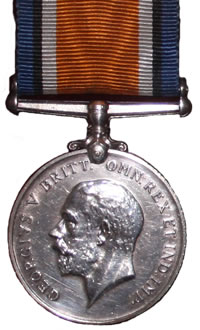 |  | ||
| British War Medal 1914-18 | Allied Victory Medal |
Commemoration | ||
 In addition to his commemoration on the South Twerton School memorial, Private Harold Carless is commemorated as follows: | ||
|
Thiepval The Thiepval Memorial commemorates those who died with no
known grave in the battles of the Somme. It is the largest British battle
memorial in the world. A large inscription on an internal surface of the
memorial reads: “Here
are recorded names of officers and men of the British Armies who fell on the
Somme battlefields between July 1915 and March 1918 but to whom the fortune of
war denied the known and honoured burial given to their comrades in death.” |
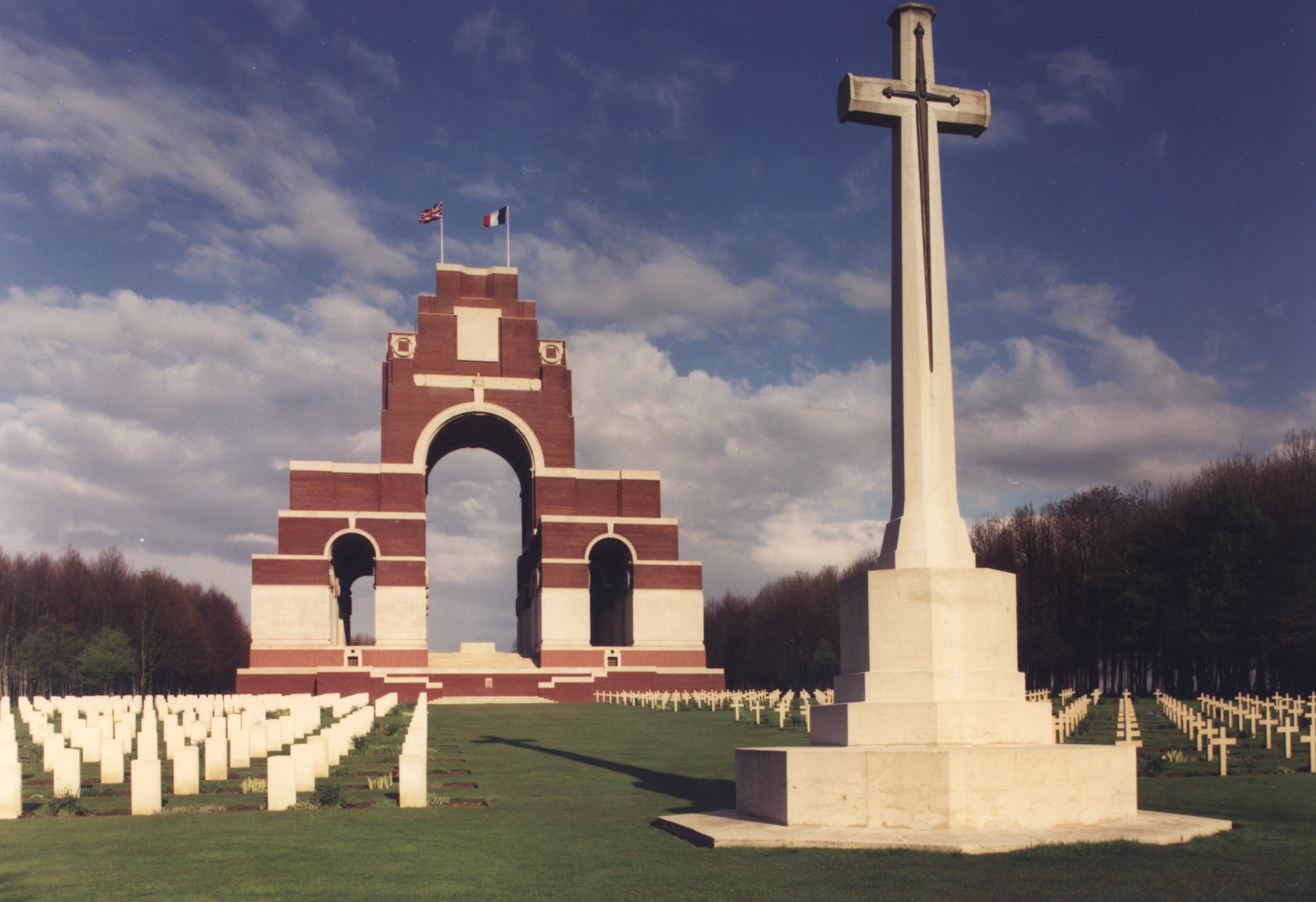 | ||
|
The Thiepval Memorial, where Harold Carless is commemorated, along with Percy Ware (who died on the same day),
Percy Whiting, and George Collins. |
|
The Thiepval Memorial was visited in July 2016 by
Mike & Kathy Sumsion of Bath, who were kind enough to find the
inscription for Harold Carless and send back the following
photographs: |
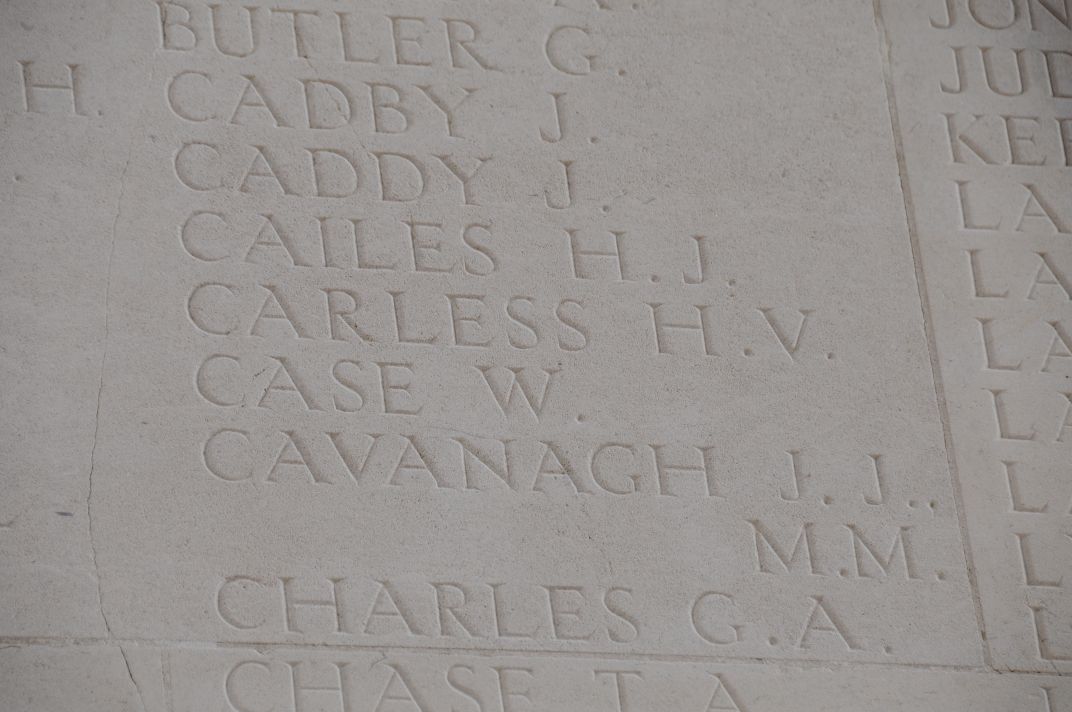 |
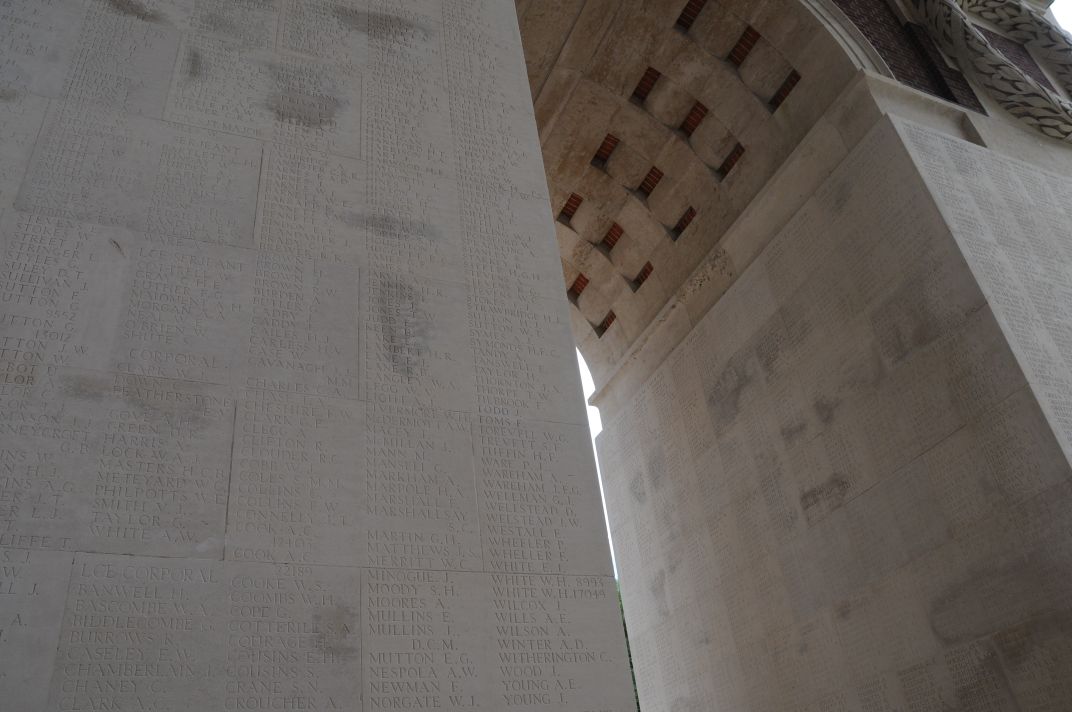 |
|
Dorset Regiment Memorial Along with all others who fought and died with the Dorsetshire Regiment on the Western Front, Harold Carless is commemorated on this memorial, which is a recent addition to the landscape of the battlefields of the Western Front and stands in the shadow of the Thiepval memorial. |
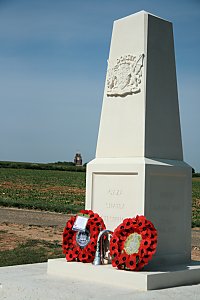 Photo from www.wessexwfa.org.uk |
|
Bath War Memorial See separate page for details of the Bath War Memorial. Harold Carless' inscription: |
 |
|
Ascension Church Memorial Harold Carless' name is inscribed on the oak tablet in the Ascension Church (see separate page for details of the Ascension Church Memorial). |
 |
Further Information |
After the warHarold's elder brother Stanley went on to become the chief schools attendance officer for Bath. This is fitting as he won a 100% attendance prize at South Twerton School in 1905, when aged 11.Younger brother Leonard Carless died in 1920. Living relativesIt would be great to hear from any living relatives of Harold Carless. From public records such as www.bathbmd.co.uk we know the following about Harold's siblings:
Please get in touch!If you have any further information on Harold Carless or want to suggest corrections / improvements for this page, please use the Contact page to get in touch. |